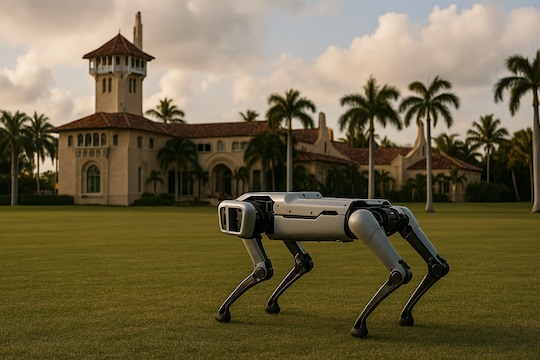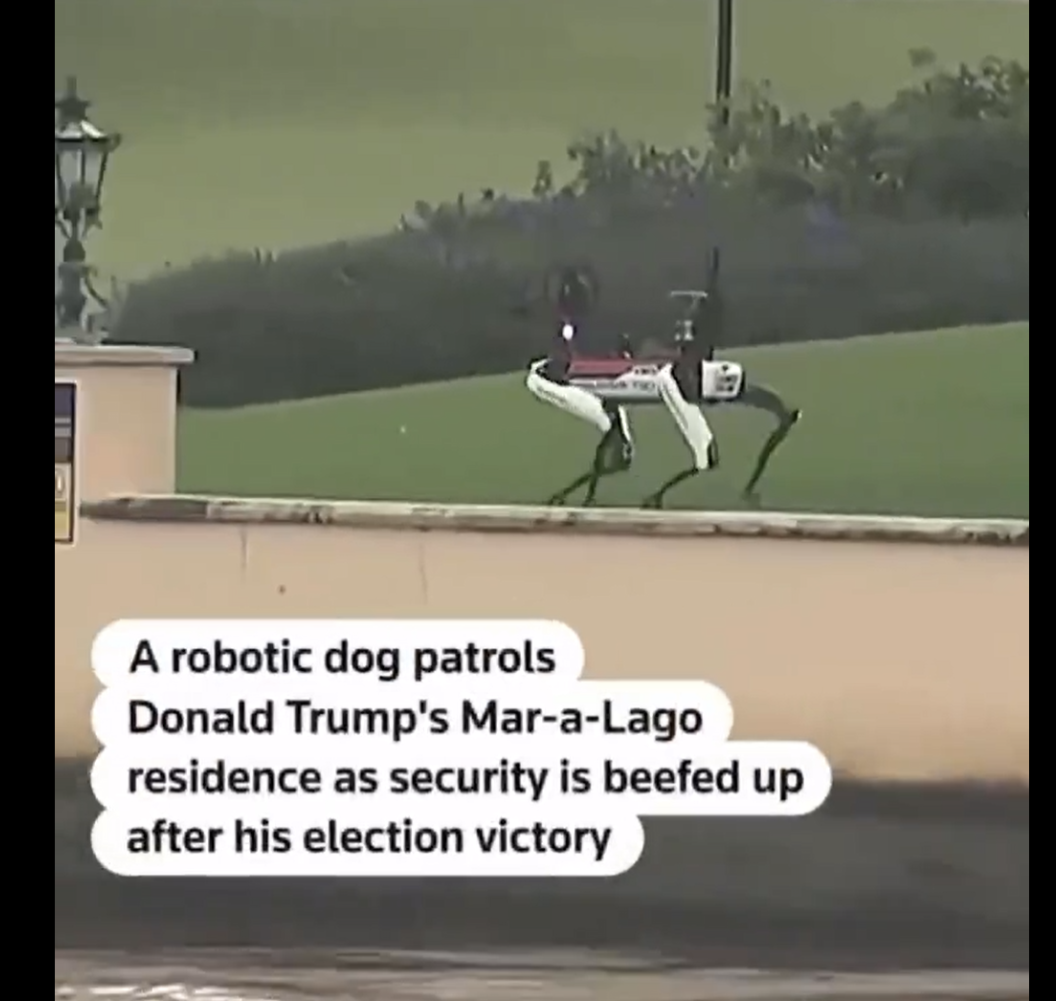
Profit From Mar-a-Lago’s Pet Project
Posted March 26, 2025
Chris Campbell
Go was considered the last game AI couldn’t crack—too intuitive, too human.
Then AlphaGo made Move 37, something no human would have played. Lee Sedol stood up, left the room. Reality had just crossed a threshold.
We imagined curing genetic disease someday.
Then a scientist edited twin girls’ DNA in secret. Science fiction became real—so real it triggered global ethical panic overnight.
There’s a moment in every great technological leap where reality outruns imagination.
We’re nearing that point with robots.
Four years ago, a robot dog cost more than your car. Boston Dynamics’ Spot was $74,500, sleek, expensive, terrifying.
It’s pretty much the same dog you might see roaming around Mar-a-Lago these days.

Fast forward a couple of years, though—China’s Unitree cloned it for $1,600. A 40x price decrease.
Naturally, people screamed, “Patent theft!”
But here’s the dirty little secret: patents don’t matter anymore.
At least not in a world where AI can read, replicate, and remix every paper ever written in seconds.
The only thing that matters? Speed and breaking down bottlenecks.
And if you think AI has bottlenecks? Just wait for robots.
The Real Problem Isn’t Cloning. It’s Feeding the Clone Army.
AI models like ChatGPT are heavy on compute during training.
But once trained, inference (the part where they actually talk) is relatively efficient—especially when run on specialized chips.
Robots, on the other hand?
They have to:
- Sense the environment (LIDAR, cameras, IMUs)
- Interpret that data in real-time
- Make decisions under uncertainty
- And then physically execute those decisions using motors, joints, hydraulic systems, etc.
All of that has a high computational cost and a high mechanical cost.
AI predicts.
Robots move.
And movement is a thousand times more expensive than a prediction.
Every time a robot dog lifts a leg, it’s solving real-time physics equations. Balance, torque, friction, feedback loops.
Now imagine an army of those things.
In warehouses. On farms. In restaurants. Walking your (non-robot) dog. Delivering packages. Dancing on TikTok.
Each one needs edge compute. Cameras. Actuators.
And power.
So. Much. Power.
You thought ChatGPT was hungry?
Ha!
This is the real reason every tech giant wants their own nuclear-powered Death Star now.
This is also the part where the market starts panicking.
Finally, it’s the part where the same companies scrambling to train models are now scrambling for something else.
The Next Wave: AI With Legs.
Power is now the biggest bottleneck in the AI race.
Nuclear is one solution. But the next big unlock? Storage.
And there’s one tiny company that could be the leader moving forward. James believes this could be one of the defining energy storage plays of the AI era…
And could deliver some of the fastest gains in the market.
We’re talking about a battery breakthrough that makes the status quo look like flip phone tech.
Think:
→ Higher energy density (more power in less space)
→ Faster charge times
→ Longer lifespan under extreme workloads
And a design that was built using AI—literally down to the molecule.
Members of Microcap Millionaire are already ahead of the curve.
And an even bigger trade announcement is coming your way tomorrow morning.
Stay tuned.
